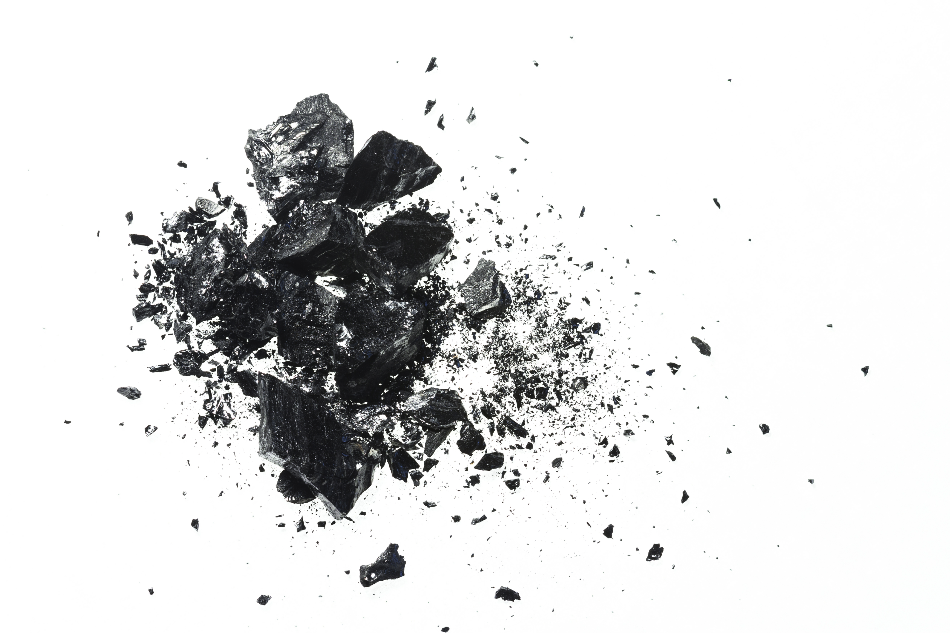
macrowildlife / Shutterstock
Measuring the gas content present within coal samples plays an important role in determining the safety of a mine. Typically, the gas content of coal is assessed through a direct measurement method, such as slow or fast desorption.
The Role of Gas in Coal
The gas content of coal can be defined as the total volume of gas present within a single unit mass of coal. The penetration of gas into coal can occur through adsorption, free phases or following the dissolution of gas that occurs when water enters coal. While adsorbed gas is typically gas that has been trapped within the coal sample in a liquid-like film form, the free phase form of gas will be found within the meso- and micro-pores of the coal’s surface.
The ability to measure the gas content within a coal sample allows for mine safety to be assessed during the outburst and/or high gas emission conditions. Furthermore, gas content within coal can also allow researchers to approximate the total amount of gas reserves available for future projects requiring coal seam gas (CSG) production.
Direct Methods
Within the coal mining industry, workers will typically utilize the direct method of gas content testing for measuring gas in coal. When employed, the direct measurement of gas content in coal typically reflects the precise volume of adsorbed gas, which is represented as free gas, as it is released during the drilling and retrieval of coal samples to the surface. Although the direct method of measurement does not provide a precise measurement of the free gas component present within a coal sample, this factor can be indirectly estimated from information on the coal’s porosity and in situ gas pressure.
Slow Desorption
Direct measurement of gas content in coal has two primary variants which include slow and/or fast desorption methods. The slow desorption method, typically used by gas production companies, allows gas to slowly desorb from the solid coal sample and accumulate. The gas desorption time is then measured and used to approximate both the desorption and diffusion properties of the coal sample.
Fast Desorption
During the late 1980s, Australian researchers developed the fast desorption method, which is referred to as the quick crash method. The fast desorption method, which has been thoroughly validated by several inter-laboratory exercises, describes three different stages where the gas content of coal is detected.
Each stage of gas content provides a measurement of the volume of gas obtained during that stage, represented by Q1, Q2, and Q3 components. The first measured gas component of Q1 represents the amount of gas that has been released from the coal sample during drilling procedures, as well as following its retrieval from the borehole. Q1 is typically much larger than the other two components Q2, which represents the amount of ‘slow’ desorbed gas that has been measured during its transportation to the laboratory, and Q3, which represents the amount of ‘fast’ desorbed gas that originated from the pulverized coal.
Challenges
Regardless of whether fast or slow desorption methods are used to assess the gas content of coal samples, both of these methods have limitations in their ability to accurately determine the gas content of a given sample. Some factors that can affect the probability of uncertainties arising during gas content measurement procedures include the equipment and measuring tools used throughout the measurement process, as well as the operators’ skills and judgments.
Sources
- Saghafi, A. (2017). Discussion on the determination of gas content of coal and uncertainties of measurement. International Journal of Mining Science and Technology 27(5); 741-748. DOI: 10.1016/j.ijmst.2017.07.024.
- Danell, R. E., Saghafi, A., Williams, R. J., & Wood, J. (2003). Reproducibility of gas content measurements using the fast desorption technique. Australian Coal Association Research Program.
- Li, Z., Qi, Q., Yang, Y., Zhou, Y., & Wang, B. (2016). Factors impacting gas content measurements using gas desorption by drilling underground boreholes. Adsorption Science & Technology. DOI: 10.1177/0263617416664534.
Disclaimer: The views expressed here are those of the author expressed in their private capacity and do not necessarily represent the views of AZoM.com Limited T/A AZoNetwork the owner and operator of this website. This disclaimer forms part of the Terms and conditions of use of this website.